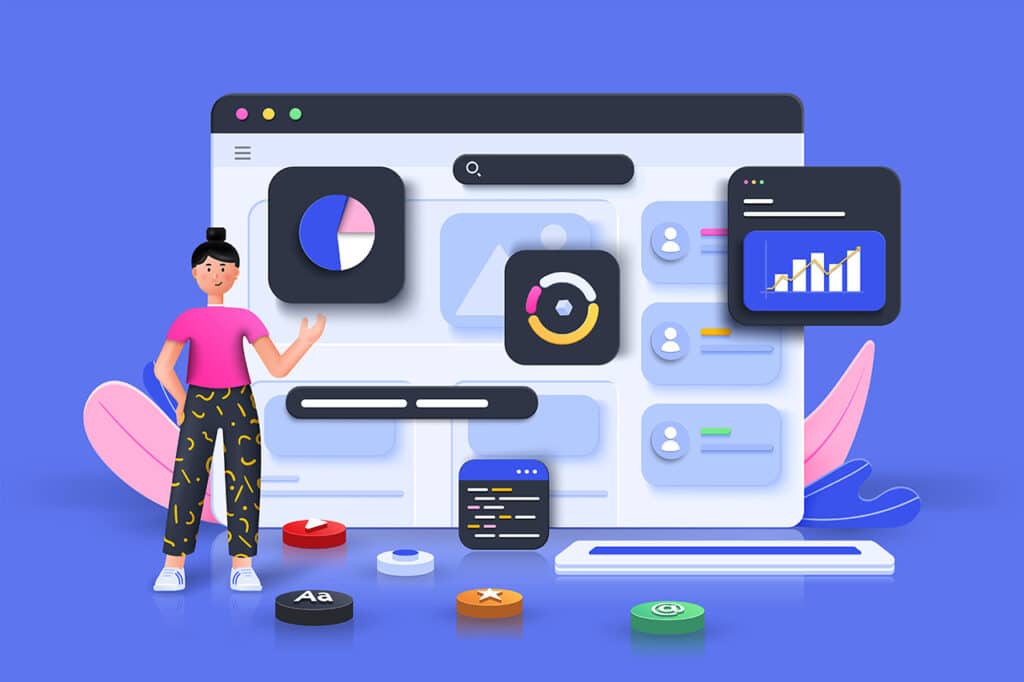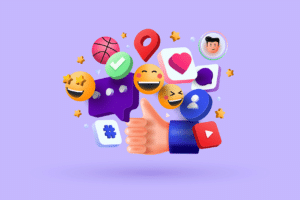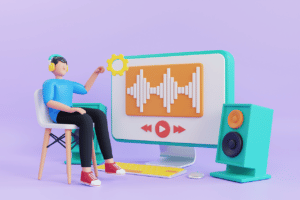A Guide to Google’s Helpful Content Update – Let’s Go!
The internet has changed a lot over the years. What started as a way to communicate and connect with friends, family, and business partners has now become an invaluable resource for information on every topic imaginable.

The Basics of Google’s Helpful Content Update
Google’s Helpful Content Update is a new algorithm update that rewards websites that provide helpful information to users.
It’s likely to result in more informative content being shown on Google’s results page.
The update is designed to reward websites that provide helpful content instead of just pages that are full of ads or low-quality content. Google says they want their search results “to be useful.”
READ: What Google Means By Quality Content
What is Google’s helpful content update?
This update, also known as the “human-friendly content update,” is a search algorithm update designed to reward sites that provide a good user experience. This includes sites that provide helpful and relevant information by way of their content. It was created in an effort to reward websites that give their users what they want: helpful and relevant information.
Although it’s not clear if this change will result in more traffic for your site, there are some things you can do now to ensure that your site continues to receive the same amount of traffic after Google rolls out its new algorithm (which is happening now for the next couple of weeks).
How does the helpful content update differ from other search updates?
The Helpful Content Update builds on previous iterations of Google’s Panda and Penguin updates, which focused on quality content over spammy ones. The Helpful Content Update is the first major update to the algorithm since those two in 2011 and 2012, respectively.
The Helpful Content Update does not require you to make any changes to your website or redesign it; instead, it rewards sites with high-quality content that users enjoy reading. If you post lots of low-quality posts or don’t regularly update your blog with new content, then your site might suffer from this algorithm change because Google ranks higher sites based on quality rather than quantity (and also gives more weight to links from other websites).
Why the helpful content update is great for business and people
The helpful content update is great for business and people.
People are more likely to engage with your content after the update. They’ll like, share, or comment on your posts when they have something useful to say (rather than spammy gibberish). That’s good news for you!
People are also more likely to read your content now that it has more value for them—especially if you’ve been sharing helpful information before the update. This means that even if someone doesn’t interact with your post, they’ll still be exposed to some of its valuable information without feeling like they’re wasting their time.
READ: What Is Google’s E-A-T SEO Algorithm And How It Affects Your Rankings
Optimizing Your Blog Post For Humans Instead of Google Results
Writing for search engines is not a good place to start. You want to write for humans.
Think about what people will read and find useful, then write something that gives them that information in an interesting way. You don’t need fancy words or phrases, just clear and simple language. Don’t be afraid of using images either – they are great ways to engage users!
Your blog post needs to have a clear conclusion or takeaway so people know why it was important for them to read your article in the first place. Make sure you use an active tone throughout your writing; instead of saying “I am going…” try saying “I go…” Also remember that Google pays attention when you use keywords – but only if they fit naturally into your content! A good keyword density tool can help you figure out how much keyword density there should be per paragraph (hint: it depends on the type of content and purpose).
Write for humans, not search engines.
Google’s updated algorithm is all about helping us find the best results for our searches. This means that Google wants to show us content that is useful and relevant to what we want to know. In order not to get caught up in SEO traps and black hat techniques, it’s important to remember that Google wants to provide users with great content so they can decide if a website is trustworthy or not before clicking on it (or even visiting it).

The best way to optimize your blog post for search engines is by writing naturally and focusing on creating helpful content that answers questions or solves problems — basically anything people might be Googling about your niche and would enjoy reading about! If you follow these tips, you should see an improvement in both organic traffic as well as conversions from organic visitors into subscribers/customers/clients within just a couple weeks!
Keep titles simple and engaging.
You want to use a title that’s short and to the point, so that it can be easily read by readers. Remember, Google is going to look at your content’s title before deciding whether or not it’s useful for users.
This means you should keep your titles short and use active voice instead of passive voice (e.g., “Google Launches New Algorithm” versus “A New Algorithm is Launched by Google). It also means using numbers when appropriate, as well as questions or statements that capture people’s attention with something new or interesting (e.g., “13 Things You Didn’t Know About [Topic]”).
If there are specific keywords related to your post, make sure they’re included in the title too—but don’t go overboard! A good rule of thumb is three times per 100 words (i.e., roughly 10 percent).
Use images, videos and audio.
In addition to the use of keywords and long-form content, optimizing your blog for humans is all about making sure the reader can actually understand what you’re trying to say. In order to help users focus on your topic, Google has added images, videos and audio (among other things) to its algorithm that should be used in your posts as well as on social media posts.
Here are some examples:
- Images break up text and give readers something interesting to look at while they read. They also help illustrate points you’re making so that people can better understand them. If possible, include an image with every post.
- Videos can provide additional information on a topic or explain why it’s important in a fun way that engages readers more than just reading text would do alone. Videos are great for almost any kind of post!
- Audio allows people who aren’t able to read or watch videos easily access information on topics they might otherwise miss out on hearing about because they have trouble reading text or watching videos online due to disabilities like dyslexia and blindness
Use an active tone
When writing for humans, you can use an active voice to help your readers understand what’s going on. Active voice is when the subject of a sentence performs an action—for example:
“You need to eat breakfast every day.”
While passive voice is when the subject receives something from another thing or person—for example:
“Breakfast is needed every day by you.”
Using active tone will make your content more interesting and engaging for users, which means they’ll be more likely to share it online. That said, there are some cases where passive voice may be preferred over active tone—but these instances are rarer than they used to be, so if in doubt opt for active!
Have a clear conclusion or takeaway
The conclusion or takeaway is what you’re hoping the reader will remember after they finish reading your blog post.
It should be clear, concise and actionable.
The takeaway is usually the last thing you want them to read, so it should summarize all of the information that came before it in your blog post.
It should also include a clear call-to-action (CTA), which can be as simple as “you can learn more here” or “sign up for our newsletter.”
You can write a blog post that’s engaging to humans, and that will also do well in search results
The good news is that you can write a blog post that’s engaging to humans, and that will also do well in search results. To get the most out of your content, keep these tips in mind:
- Write for humans, not search engines.
- Keep titles simple and engaging.
- Use images, videos and audio wherever possible (and relevant). Images are a great way to attract people’s attention on social media sites like Facebook or Pinterest—they’re more likely to click on posts with an image than those without one!
- Videos can be used as well—but make sure they’re short enough so viewers aren’t turned off by them (ideally less than 2 minutes).
- And if you have time constraints when creating content for your website, try recording audio versions of popular articles instead of writing them from scratch; this way readers won’t miss anything while they listen instead of read! It might take some practice getting used talking into microphones but once you’ve got it down pat it’ll save time when creating content too which means more time spent doing other things like sleeping at night 🙂
Conclusion
The Helpful Content Update is a great opportunity for you to write a blog post that’s engaging and helpful to humans, and also has the potential to rank well in search results. When it comes down to it, though, your main goal should always be to write something that’s helpful for your readers—and if Google happens to like what they see too? That’s just an added bonus!
We help businesses like yours succeed online! If you have a strategy you’d like to discuss, we’d love to hear about it! Call or contact us today to see how we can increase your sales and conversions!





